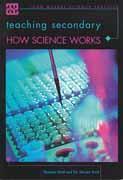Vanessa Kind and Per Morten Kind
London: Hodder Murray 2008 | Pp155 | £19.99 | ISBN 978 0 34 094139 3
Reviewed by Mike Shipton

The introduction of the 'How science works' strand is one of the more bold changes made to science specifications in recent years. It has met with some controversy because, to make space for it, some cherished content has been sacrificed.
Incorporating this new requirement has been a challenge for many teachers because it is far more difficult to deliver than facts, theories or applications. Teachers new to the profession, who have had the chance to grapple with 'How science works' as part of their training, may take it in their stride. For many experienced teachers, however, who have had to deliver it with little or no support, it has been a more daunting prospect. This book provides a welcome resource for all science teachers who are now required to incorporate historical, psychological, philosophical and sociological issues in science.
Written by authors who know what teachers want, the text is clear, well organised and structured in a way that allows readers to dip in as they need. There is a limited amount of material on practical and investigative skills because the authors have correctly gauged that these are covered comprehensively elsewhere.
The content comprises a range of classroom activities, with worksheets supplied on an accompanying CD-ROM, and offers strategies and concise background information for teachers tackling unfamiliar material for the first time. Examples of activities include What causes the northern lights? and Using animals in experiments. There is a useful grid to show how the activities match the National Curriculum programme of study statements.
The activities are designed to be flexible, though it would be difficult to edit the worksheets since they are only supplied in pdf format. In several cases editing would be needed because the vocabulary used and the proportion of open-ended questions make the worksheets only suitable for the more able students at Key Stages 3 and 4.
'How science works' is not a minor, optional add-on to the science curriculum but a major development in the way we educate young people. Teaching secondary how science works provides a valuable resource from which to develop expertise in this area.






No comments yet